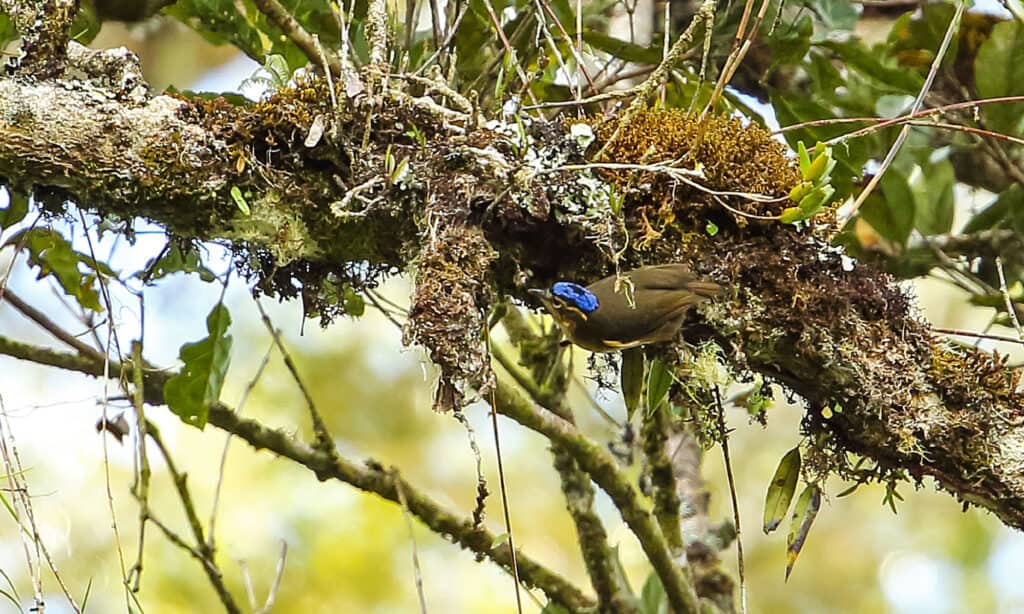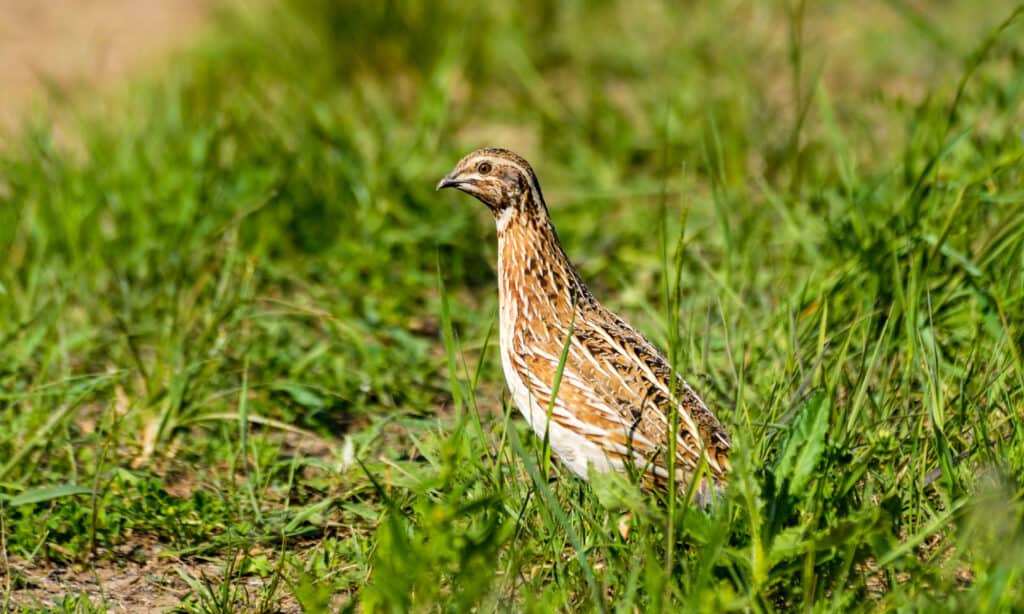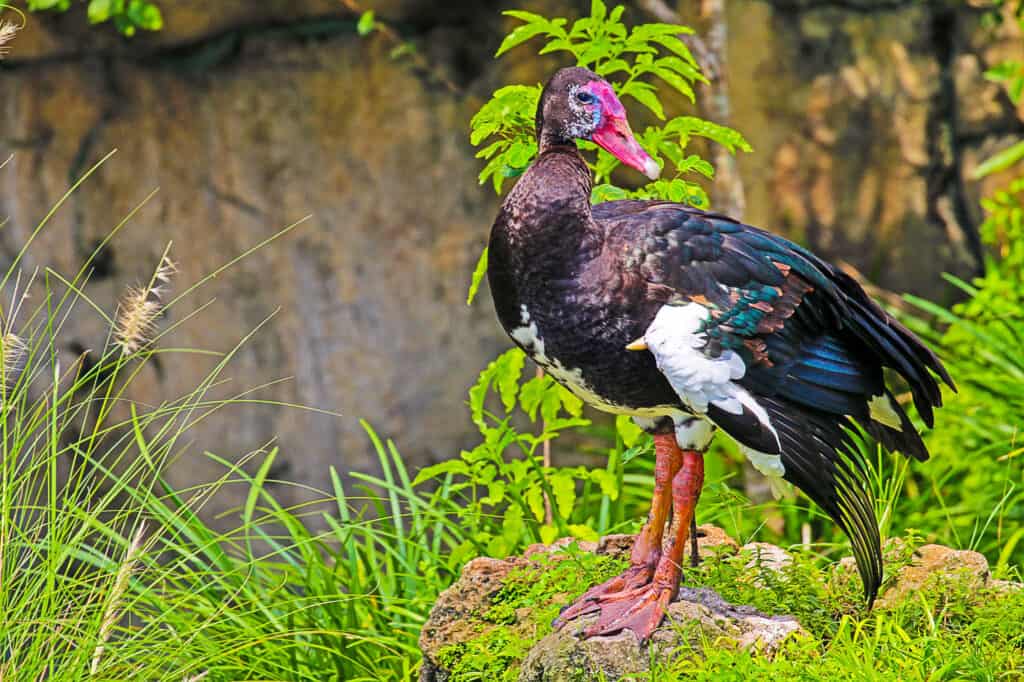We’ve heard of venomous snakes and poisonous frogs, but did you know there are toxic birds? Studies on these unique winged creatures are relatively new, and research has only scarcely been conducted within the past two decades. First, poisonous birds are rare and hard to find, often living in deadly, remote areas like rainforests and jungles. And second, precautions must be taken when handling them.
Unlike snakes and spiders who secrete and inject their deadly toxins, birds receive their poisonous characteristics from the plants and animals they consume. Research suggests that these species developed their traits through evolution, adapted to store toxins morphologically unique to them. Discover the world’s poisonous birds and understand how they present a danger to humans.
Hooded Pitohui

The hooded pitohui gets its toxicity from plants in its diet.
©iStock.com/feathercollector
The hooded pitohui belongs to the Old World oriole family and is endemic to the New Guinea. It is the first documented poisonous bird, discovered in 1990 when scientists experienced burning and numbing after handling the birds. This species, along with other pitohuis, have neurotoxins called Batrachotoxin in their tissue. Batrachotoxin, a highly toxic compound found in nature, causes paralysis and death.
The hooded pitohui’s skin and feathers are the most toxic part of their bodies. These birds do not produce this compound themselves; rather, they get it from their diet. Research is still determining from where the toxins are derived, but beetles in New Guinea forests are a possible source. The function of the toxin serves several purposes, including defense against predators and deterrence of pests like ticks and lice.
Blue-Capped Ifrit

Blue-capped ifrits use their toxins to ward of predators.
©iStock.com/neil bowman
The blue-capped ifrit is a small passerine bird endemic to New Guinea. Like the pitohui, the blue-capped ifrit has batrachotoxin within its skin and feathers.
These poisonous birds use their toxins to defend themselves from predators. The level of toxicity varies among birds, depending on the amount of Choresine beetles in their diet. These beetles, which contain high levels of batrachotoxins, are though to be a possible source of batrachotoxins in pitohuis and ifrits.
Common Quail

Coturnism is an illness arising from eating quail that have feasted on hemlock.
©iStock.com/VictorTyakht
The common quail, also known as the European quail, is a small ground-nesting bird in the pheasant family. It is a migratory game bird that breeds in Eurasia and winters in Africa and Southern India, feeding primarily on seeds and insects. Occasionally, common quail will eat hemlock seeds during their fall migration. Hemlock plants are highly toxic and can kill humans and animals within hours of consuming their leaves and seeds.
While hemlock is just another food source for quail, humans can become ill if they consume the flesh of a quail that has feasted on hemlock. One in four people who eat such quail develop coturnism, an illness that can lead to kidney failure.
Spur-Winged Goose

The spur-winged goose is a large bird native to Sub-Saharan African wetlands
©Joseph M. Arseneau/Shutterstock.com
The spur-winged goose is a large bird native to Sub-Saharan African wetlands. This goose spends its days foraging for plant matter and insects near rivers and lakes, often consuming blister beetles. The beetles excrete a toxic blistering agent called cantharidin, which causes painful blisters and sores.
The spur-winged goose consumes these beetles, storing the toxin inside their tissue, poisoning those who eat their cooked flesh. Those who consume this toxic meat can become extremely sick, as ingesting more than 10 milligrams (0.0003 ounce) of cantharidin is enough to kill an adult human.
Other Toxic Birds
- Bronzewing pigeons (Australia, New Guinea) – The Bronzewing pigeon consume poisonous gastrolobium plants, causing contact dermatitis, gastrointestinal problems, and possibly death when their meat is eaten in large quantities.
- Red warbler (Mexico, United States) – The red warbler builds up toxins from ingesting berries from the yew tree. They are not deadly but can cause nausea and vomiting if you come in contact with one.
- Little Shrike-thrush (Australia, Indonesia, New Guinea) – Little shrike-thrushes ingest insects with batrachotoxin, poisoning those who touch its feathers. Humans can contract rashes, nausea, and vomiting if they handle these birds.
- Ruffed Grouse (across North America) – Ruffed grouse eat toxic plants in late winter, occasionally making people sick who consume their meat.
- Eurasian Hoopoe (Europe, Asia, Africa) – These birds produce a terrible-smelling secretion from their uropygial glands. The liquid contains high levels of dimethyl sulfide, which can cause skin irritation, nausea, and vomiting when you come in contact with them or ingest their meat.
Up Next:
- Poisonous Butterflies
- The Most Venomous (Poisonous) Snakes in Florida
- Different Types of Poisonous Berries To Avoid At All Costs
The photo featured at the top of this post is © feathercollector/Shutterstock.com
Sources
- pubmed cm, Available here: https://pubmed.ncbi.nlm.nih.gov/25839151/
- ncbi.nlm.nih.gov/pmc/, Available here: https://www.ncbi.nlm.nih.gov/pmc/articles/PMC528779/
- researchgate.net, Available here: https://www.researchgate.net/publication/21715504_Homobatrachotoxin_in_the_Genus_Pitohui_Chemical_Defense_in_Birds
Thank you for reading! Have some feedback for us? Contact the AZ Animals editorial team.







